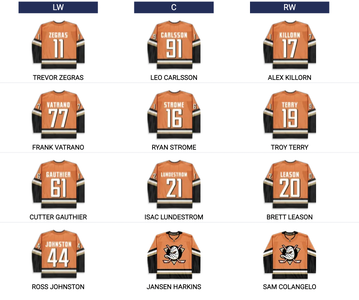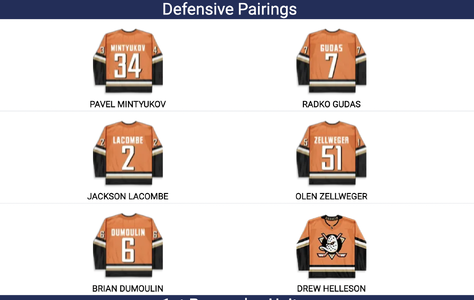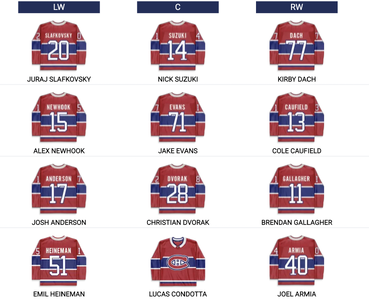Agreed that there are other stats using quality of teammates and opposition, and zone starts - e.g. most of the stats with "adjusted" somewhere in the name. But xGF%, which was being discussed, does not. And also, these "quality of teammates and opposition" bits are ALSO based on the same NHL event data, which is just super limited, so it's a somewhat circular definition. If these stats have serious errors/caveats about your own quality, they have those same caveats/errors about the quality of your teammates and opposition.All of this information can also be found and used (although QoC and zone starts are vastly overrated in terms of impact outside of the outliers).
- Quality of teammates
- Quality of opposition
- Are you getting put out for mostly o-zone work (o-zone faceoffs, or hopping over the boards on the fly when your team has possession) or d-zone work (the opposite)?
Eg, you can see on MTL, the Guhle pairing plays ridiculous (hard) minutes, the Xhekaj pairing plays ridiculous (easy) minutes.
Better models use this information to varying extents, but yes, it is a developing stat.
- Simply knowing "slap shot from the right dot" isn't actually very good at predicting the danger of a shot. None of this sort of info is available:
- Was the goalie moving, or set?
- Was the goalie screened?
- Did the player have the time/space to get off a quality shot, hard and with great placement, or were they heavily pressured and could only get off a weak shot with bad placement?
Also, players who consistently generate chances in ways that models do not account for will outperform those models over a large sample size (which can be easily recognized if you again look). It's why most WAR models use actual goals for offense, and expected goals for defense.
If you are expecting it to be a perfect stat, you're crazy.
Ignoring it's value is also crazy.
AFAIK this data is simply not available. For all advanced stats available to the general public (that I've seen), the source data is the official NHL stats/event log, which I gave a sample event of in my previous post, and all of this information is simply not there. Some stats try to infer it via things like "if the shot came 2 seconds since the last event, that's more likely to be a one-timer than a shot 5 seconds since the last event," but this is stretching things massively and a very low quality analysis IMO.Better models use this information to varying extents, but yes, it is a developing stat.
- Simply knowing "slap shot from the right dot" isn't actually very good at predicting the danger of a shot. None of this sort of info is available:
- Was the goalie moving, or set?
- Was the goalie screened?
- Did the player have the time/space to get off a quality shot, hard and with great placement, or were they heavily pressured and could only get off a weak shot with bad placement?
I don't think xGF% is completely useless, but I do think the error/noise within it is mostly larger than the signal, when it comes to trying to determine a player's overall impact.
For example, according to MoneyPuck's xGF% model, last year Mark Jankowski had the highest xGF% of any non-Edmonton player (with 300+ 5v5 minutes) - I say non-Edmonton, because Edmonton players absolutely dominated xGF% last year (again indicating it's more of a team than individual stat). Or if you want to use a higher minutes cutoff (say 1000 5v5 minutes), the highest xGF% of any non-Edmonton player was Jordan Staal. Or on the flip side, guys in the bottom 50 for xGF% (minimum 1000 5v5 mins) include Kyle Connor, Mark Scheifele, Alex Ovechkin and Connor Bedard. You could take this literally, and say "Mark Jankowski is a massively better player than Mark Scheifele", but IMO a better interpretation is that the stat just isn't very good at describing a player's value on its own, and Mark Jankowski is nowhere close to Mark Scheifele as a player.
Last edited:








